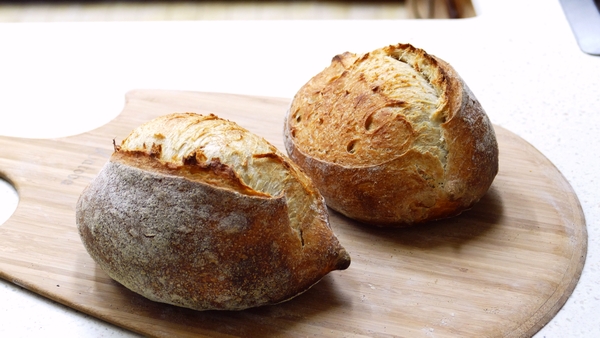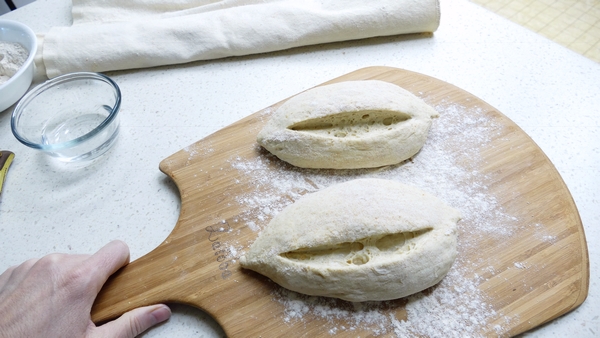Slowing Down a Starter or Dough


In summer or in warmer climates ambient temperatures can affect dough fermentation rate. Your starter and dough can over-ferment easily in hot weather. Here are some ideas for slowing down your starter and dough:
Things that help slow down a starter are:
- Keep the starter cooler
- Feed it less whole grains and instead use more white flour
- Add a pinch of salt
- Use ice water when feeding or mixing dough
- Try a lower inoculation (less starter to food ratio)
- Lower the hydration (you would only want to use the last one if you are storing it or using a low hydration motherdough)
- Use a tightly woven cloth over your starter (secure it with a rubber band) to allow it to breath and prevent heat build up in a closed container*
Critical: In warmer weather you should reserve less starter when feeding and feed it more often if kept at room temperature, otherwise keep it cooler in the fridge.
.


100% Sourdough starter
.To slow down your final dough:
- Do a shorter autolyse or skip the autolyse
- Try a shorter bulk ferment
- Add the salt when mixing the dough.
- Try adding ice water when making your dough
- Keep your flour in cold storage
- Use formulas with a lower inoculation rate (use less starter in the dough)
- Keep the dough cool (try putting the whole container in the fridge more often)
- Chill the dough BEFORE shaping and retarding
- Use your starter when it’s younger, after just a few hours of fermenting (not overly fermented and warm)
- Try using a cold motherdough or lievito madre for inoculation instead
- Put a pinch of sea salt in the motherdough or starter to slow it down as well
- Use more white flour and less whole grains
- Mix and then chill the dough right away, letting it take a few days to ferment before using it

.* A sourdough starter culture is anaerobic and doesn’t NEED oxygen to exist, although it likes oxygen just fine. The tightly woven cloth will just allow the heat to escape so it doesn’t build up as much in a closed container. However, it may also evaporate more quickly and dry out on top.
.Any other ideas for slowing down fermentation? Post your suggestions in the comments below.
Have fun baking everyone, even when it’s hot!
Teresa
.
Learn new skills with an online baking course: Sourdough Baking Courses



Thank you for all the information! These tips work great for my artisan loaves. However, I make sandwich (sourdough, of course) loaves every week. I’m getting frustrated because I don’t know how to, or when to, refrigerate my dough. Every single loaf I’ve made has been over fermented or, once, under fermented because I was worried about it going over. Would you be willing to offer any guidance or tips, please? I would be very grateful. Btw, my house stays around 85 degrees all day. :((
Hello Athena, If you know how to look for when bulk ferment is finished, it can help a lot. The dough will be soft, stretchy, full of bubbles and pull a nice windowpane. If the dough has all of those qualities, then it is done bulk fermenting even if it isn’t following the formula’s suggested time line.
Also see this article, it might help you: https://thebakingnetwork.com/protecting-gluten-in-a-weak-dough/
Thank you so much, very helpful information. I have been having problems with over proofing and these methods for slowing down the dough are so helpful. Great help. You are the best!
I’m glad you enjoyed the article Jo Ann and happy it’s been helpful 🙂
Thanks Jo Ann, I hope you are able to figure out what works best for your situation.
Great information as usual!